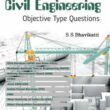Swimming pools are a great way to cool off during the summer months, but they require regular maintenance to keep them looking their best. Whether you have a concrete pool or an above-ground pool, there are important steps you should take to ensure it remains in top condition.
If you’re the proud owner of a concrete swimming pool, then you know that keeping it in good condition requires regular maintenance. Without proper care, your pool can quickly become an eyesore and a health hazard.
To help you keep your pool looking and functioning its best, here are 5 tips for maintaining your concrete swimming pool. From removing debris and regularly brushing to balancing the pool water, these tips will ensure your pool is always ready for a refreshing dip. So get your supplies ready and let’s get started!
Cleaning & making your pool free of debris
Keeping your concrete swimming pool clean and free of debris is essential for proper maintenance. This means regularly removing leaves, dirt, and other debris from the surface of your pool.
The best way to do this is to use a manual or powered pool brush to scrub the sides and bottom of your pool.
Be sure to reach all areas of the pool, even those that are hard to access. Doing this on a regular basis will help keep your pool looking its best and prevent any potential problems from arising.
Additionally, it’s important to use an appropriate brush for the type of concrete your pool is made from. For example, if you have a gunite pool, you should use a stiff-bristled brush while a vinyl liner pool will require a softer brush.
Vacuum Your Pool
Vacuuming your pool is an important step in keeping it clean and clear. To vacuum your pool, you will need a pool vacuum, a pole and a vacuum hose.
Start by attaching the hose to the vacuum head and then to the pole. Now you can submerge the vacuum head into the pool and slowly move it around the surface of the pool, paying attention to areas where dirt or debris has settled. Be sure to take your time and move the vacuum head over each area until the water looks crystal clear.
Like Us on Facebook!
Once the entire surface of the pool has been vacuumed, turn off the pump and remove the hose and vacuum head from the pool. Empty out any debris that has been collected in the filter bag and check to make sure that all areas of the pool have been cleaned. With regular vacuuming, your pool should remain free of debris and dirt, ensuring that it stays clean and inviting.
Subscribe Us on YouTube!
Clear Skimmer Box
Keeping your pool skimmer box clean and free of debris is important for the health of your pool. Skimmer boxes are typically located near the top of the pool and act as a collection point for large pieces of debris such as leaves and twigs that fall into your pool. It’s important to clean the skimmer box out frequently, as this helps maintain proper circulation in your pool water.
To empty and clean your skimmer box, first turn off your pool pump. Carefully open the lid and scoop out the debris inside with a net or skimmer. Use a hose to spray down the inside of the skimmer box, ensuring that all debris and build-up is removed. Once it’s been cleaned, place the lid back on the box and turn the pool pump back on.
Maintaining a clean skimmer box is essential for keeping your pool healthy and clean. Regularly cleaning your skimmer box is also important if you want to keep your pool looking its best and reduce the amount of maintenance required. Taking these steps to keep your skimmer box clean will help you enjoy your pool for years to come.
Maintain balance of pool water
Maintaining the proper balance of your pool water is key to having a clean and healthy swimming pool. The pH level of your pool water should be between 7.2 and 7.6. If it is too low, your water will be acidic which can cause damage to your pool surfaces and equipment. It can also cause skin and eye irritation for swimmers. If the pH level is too high, your pool will become cloudy, algae will grow more easily, and chlorine won’t work as effectively.
You should also test and adjust the calcium hardness of your pool water. This should range between 200 ppm (parts per million) and 400 ppm. If it is too low, corrosion of metal surfaces such as ladders, lights and filter grids can occur. If it is too high, scaling may occur on your pool surfaces.
It’s important to test the total alkalinity levels of your pool water as well. This should be between 80 and 120 ppm. Low alkalinity can lead to pH problems in your pool, while high alkalinity can prevent the proper balance of pH levels.
Finally, make sure you check the chlorine levels of your pool water every week or two. You should maintain a free chlorine level between 1-3 ppm. Any lower than that and your pool will start to become contaminated with bacteria, and any higher than that will cause discomfort for swimmers.
By taking these steps to maintain the balance of your pool water, you will have a clean, healthy and safe swimming environment for you and your family.
Take care of filters
Keeping your swimming pool filters clean is essential for maintaining a healthy and safe swimming environment. Over time, dirt and debris can accumulate in your pool’s filter, which can eventually lead to a decrease in water quality and clarity. It is important to keep the filter in top shape in order to ensure the pool is always crystal clear.
There are a few different types of filters that are used in concrete pools. The most common type of filter is the cartridge filter. This type of filter works by trapping dirt and debris as it passes through the pool’s circulation system. The trapped particles will then be collected in the filter and can be easily removed when it is time to clean.
You should check your pool’s filters on a regular basis and perform maintenance as needed. Generally speaking, you should be cleaning your filter at least once a month or after heavy rain or storms.
To clean the filter, you need to first shut off all of the power to the pool, including the pump and heater. Next, take off the top lid of the filter, remove the cartridge, and rinse it off with a garden hose. If there is still debris on the cartridge, use a soft brush to scrub it away. Once the filter is completely clean, reinstall it in the filter, turn the power back on, and restart the pump.
If you want to a stunning concrete pool in the backyard, BaaliPools are best pool builders.
Conclusion
Having a concrete swimming pool in your backyard is a great way to enjoy a sunny day. But keeping it clean and well-maintained is an important part of owning a pool. By taking the time to clean your pool’s filters regularly, you can help ensure that your pool stays crystal clear and safe for swimming.



















